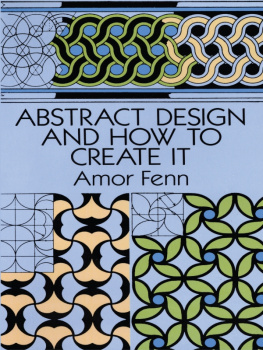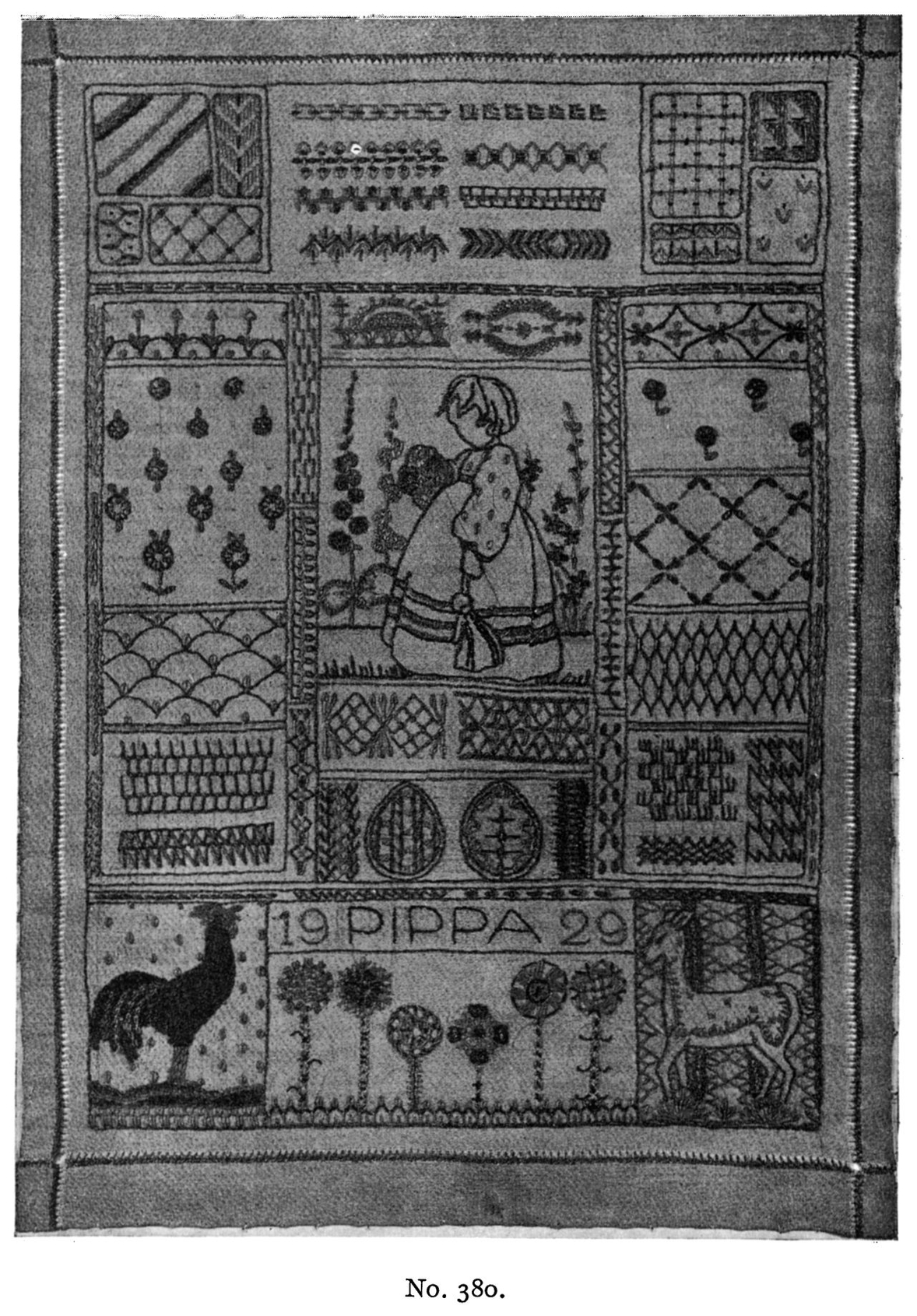NOTE OF ACKNOWLEDGMENT
I AM indebted to my old friend Mr. Harry Napper for permission to reproduce his design, Fair-field, as a frontispiece. The unit in this is wider than usual, and occupies the full width of the material, which is 31 inches.
The reproduction is therefore only a part of the design, which depicts the various forms of entertainment common to a country fair. These, with the interested groups of holiday folk, constitute the sole material. Humour is a conspicuous element, and though the episodes are to some extent realistic in rendering, it is something of a tour de force in that the sense of pattern is preserved throughout.
The extremely skilful arrangement on decorative lines would be more apparent had it been possible to reproduce a larger area of the design.
It is printed in eleven distinct colours, some of which are also employed as stipples and others are superimposed. It was produced by Messrs. G. P. & J. Baker, Ltd., by means of the surface machine. This firm were the first textile printers to use this method in England.
Acknowledgment is also due to Miss Dorothy Snow, the headmistress of the Art Section of the Goldsmiths Training College, New Cross, and to Miss Bunnell, of the Handwork Section at the same institution, in affording opportunity to reproduce work executed by students in their respective departments; and last, but not least, to my one-time student, Miss Dora Bard, who is responsible for many of the illustrations in this work.
POSTSCRIPT
ILLUSTRATIONS Nos. 378, 379, 380 are of work executed by students of the Training Department of the Goldsmiths College, New Cross.
The first four bands on No. 378 are woven on hand-looms in the Handwork Section under the direction of Miss Bunnell; the patterns are quite simple and the direct result of the process.
The fifth example is simple needlework in wool on canvas, and in no way differs in principle from the woven patterns except that the pattern is an addition toinstead ofan integral part of the material ; this with the examples shown in illustrations Nos. 379 and 380 is the work of students in the Art Section under the direction of Miss Dorothy Snow.
The patterns illustrated in No. 379 are in cross-stitch on linen, and notwithstanding the whimsical nature of the designs, are admirably adapted to the method of expression.
No. 380 is a sampleran exploitation of various stitches, and patterns that may be evolved from them; though in the main direct and obvious, there is here and there evidence of licence, which, however, is permissible.
Much of the charm of the originals is in the colour, unavoidably lost in half-tone reproduction, but the purpose of illustration is to demonstrate patterns that can be readily achieved by simple methods which are well within the scope of the average executant.
No. 381 is an example of Swedish peasant weaving, and is interesting as a survival of traditional design.
In the foregoing patterns geometrical arrangement is conspicuous, due, indeed, to the process involved in each instance; this element, however, is not essential in No. 382, where the geometric character of the design is arbitrary and not necessary to the construction. The work is Arabian and is characteristic of Mohammedan design. It is part of a pulpit door, and consists of wocd mouldings geometrically arranged, with relief detail in the enclosed areas.
ABSTRACT DESIGN
CHAPTER I
INTRODUCTORY
THE object of this book is to deal with elementary pattern and its construction. The design of structural work or formative processes is not dealt with, though experience will show that the underlying factors are much the same in all cases.
Early attempts usually fail through having too much variety. With painted ornament, usually a personal performance, more licence may be allowed, but a good deal of restraint is aesthetically essential to good decoration. An extremely simple unit may by its repetition give an elaborate effect of pattern. Students are advised to analyse patterns that appeal to them and endeavour to determine the factors to which the effect is due.
The desire to be original is an early obsession, but originality is a misapplied word, since we can only deal with that which has entered into experiencea more appropriate term is personal or individualand this is the main quality that gives distinction to an artists work.
Invention is involved in design to a certain extent, but rather in adapting and arranging than in evolving anything that is entirely new. At no time has anything been produced that had no resemblance to nature in some way or another, often remote certainly, and often curious and with symbolic significance; such strange combinations, for instance, as the Assyrian winged and man-headed bull, which were attempts to represent certain qualities in a symbolic way.
Repeating patterns are constructed on a geometric basis. The design may be frankly geometric in detail, that is, such as can be directly executed by the mathematical instruments, or floral or other details not so obviously abstract may be employed, and in many cases the geometric structure on which it is built may not be directly apparent. In a perfectly free all-over pattern the geometric element may merely consist of the general line to ensure repetition; the unit may be planned on a rectangle, a square, or a diamond, and any further geometric element may not appear. In many patterns the dominant lines are obviously drawn with the aid of instruments such as those where the undulate line is employed either as a stem, or to define and emphasize shapes.
Good effects are obtained by grouping details into deliberate geometric shapes, such as the circle, square, or triangle, and these should be arranged so that the recurrence of them also forms pattern. The shapes may be rigidly adhered to, or they may be modified with the detail to disguise to some extent the plan on which the latter is arranged. As a general rule a design that is to be repeated indefinitely should when seen at a moderate distance suggest pattern in the dominant shapes which on closer observation are seen to be composed of smaller detail. The Persian design illustrated No. 344 is an example of this. The dominant detail is in the form of a conventionalized pink composed within the limit of a circle, and the general plan is that of the diamond.
Reference to the illustrations will show the influence and importance of geometry in design, and the recognition of this as the general basis and in some cases in the detail will be found a saving of time, and will avoid aimless floundering about, only to arrive eventually at the same point. It is desirable, therefore, that in practice a geometric structure should be the first step.


















